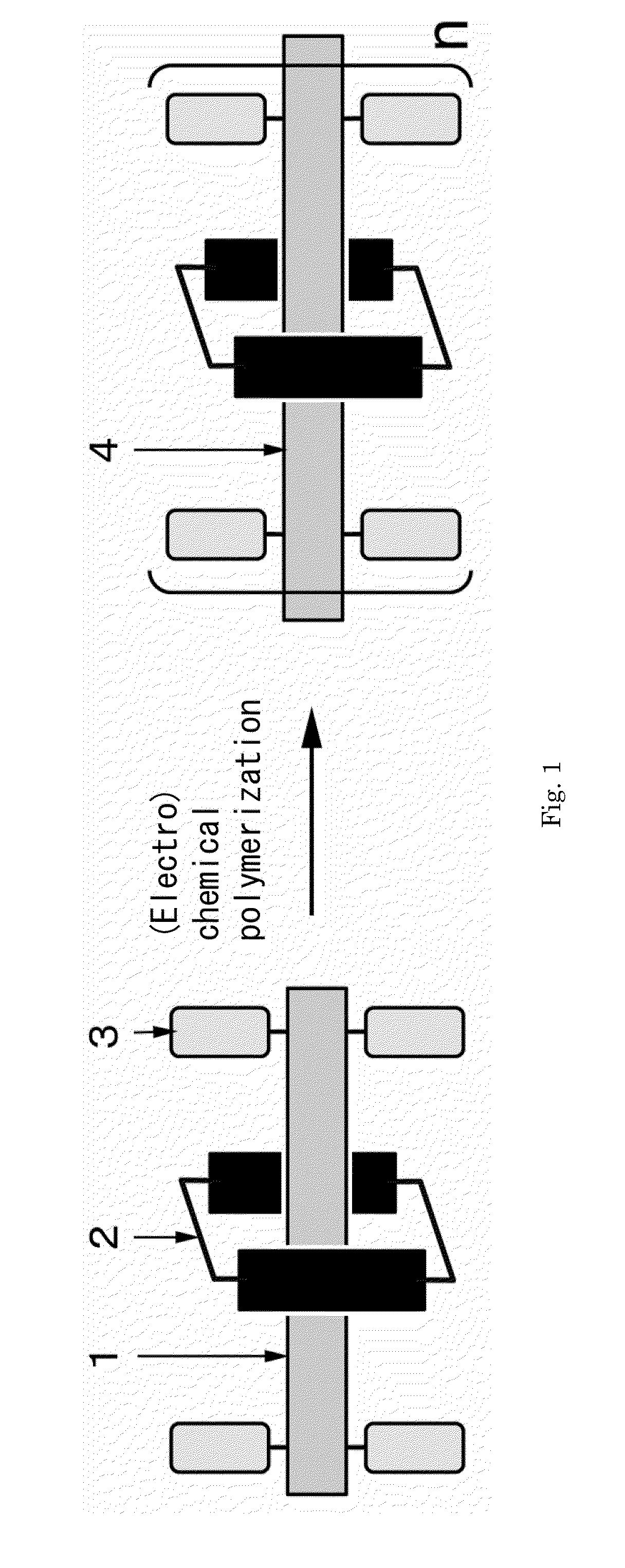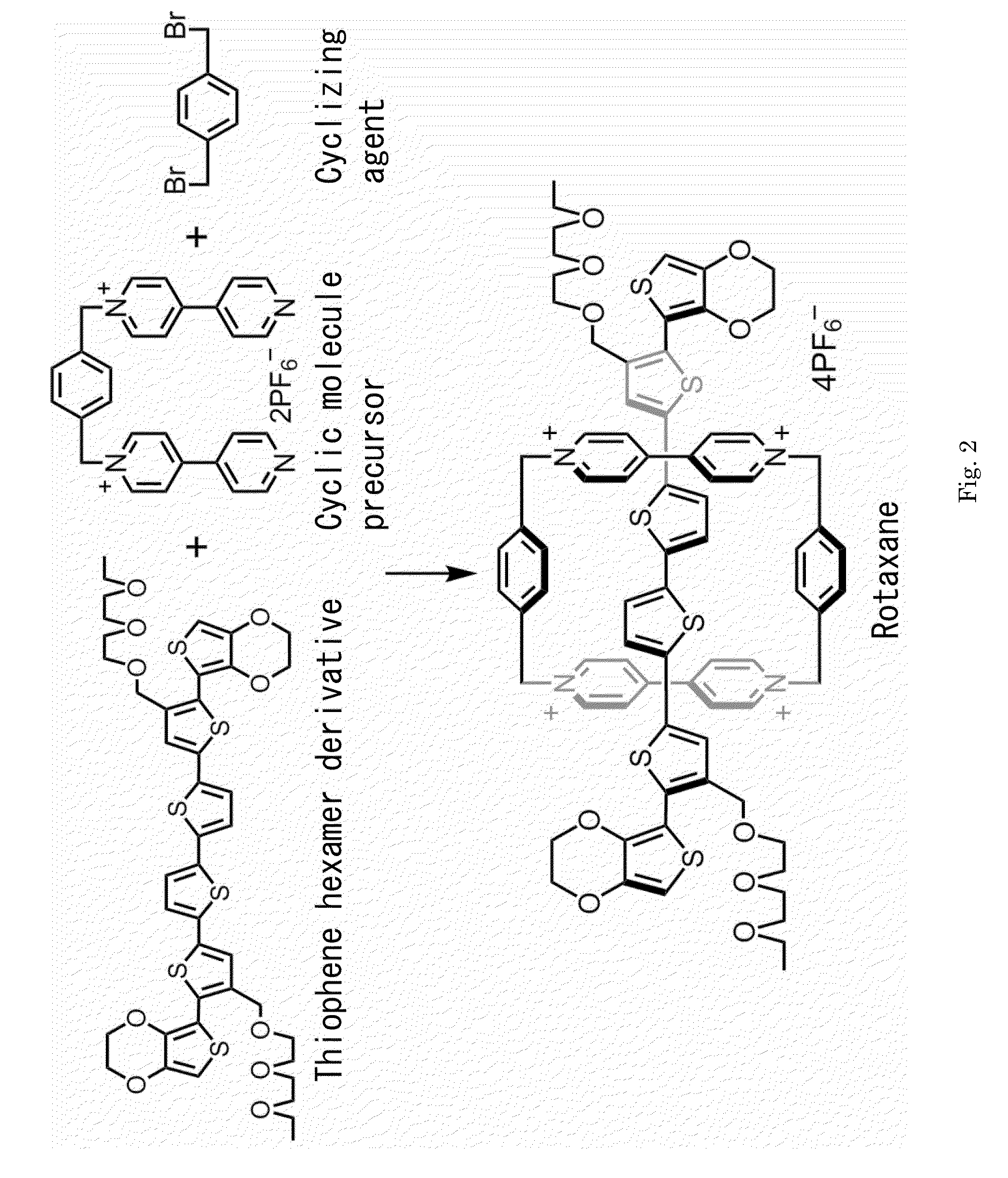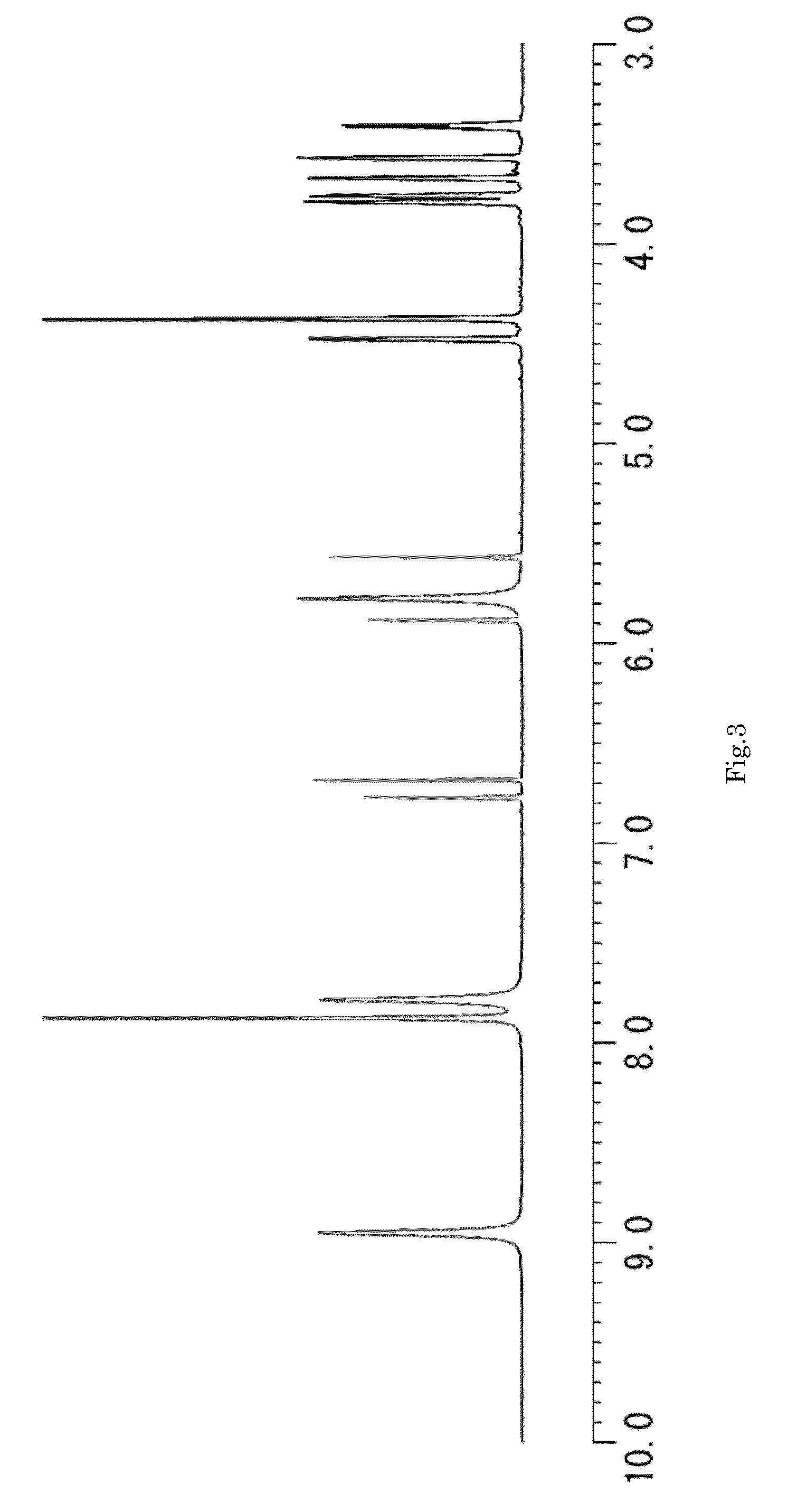Electrically conductive polyrotaxane
a technology of conductive polyrotaxane and rotaxane, which is applied in the field of electricly conductive polyrotaxane, can solve the problems of reducing conductivity and difficulty in maintaining the quality of conductive polyrotaxane at a uniform level, and achieves the effect of stable conductivity
- Summary
- Abstract
- Description
- Claims
- Application Information
AI Technical Summary
Benefits of technology
Problems solved by technology
Method used
Image
Examples
example 1
[0040]
[0041]As shown in FIG. 2 and Table 1, a thiophene hexamer derivative expressed by chemical formula 3, namely 3,4,3′″″,4′″″-bis(ethylenedioxy)-3′,4″″-[2-(2-ethoxyethoxy)ethoxy]methyl-2,2′:5′,2″:5″,2′″:5′″,2″″:5″″,2′″″-sexithiophene, as olygomer, a cyclic molecule precursor (chemical formula 9), and a cyclizing agent α,α′-dibromo-p-xylene (chemical formula 10) were dissolved in acetonitrile or dimethylformamide, and the solution was kept agitated in the argon atmosphere for five to seven days.
[0042]
[0043]
TABLE 1Rotaxane synthesis conditions and resultStarting MaterialReaction conditionThiopheneCyclicAmountExperimenthexamermoleculeCyclizingofNo.derivativeprecursoragentType of solventsolventDurationYield190mg140mg50mgAcetonitrile6mL510mol %2130mg220mg75mgAcetonitrile5mL611mol %3300mg470mg175mgAcetonitrile10mL711mol %4270mg1500mg630mgDimethylformamide20mL77mol %5300mg470mg175mgDimethylformamide10mL79mol %
[0044]To decrease the polarity of the solution, 30 mL of acetic ester was adde...
PUM
| Property | Measurement | Unit |
|---|---|---|
| internal diameter | aaaaa | aaaaa |
| voltage | aaaaa | aaaaa |
| absorption maximum wavelength | aaaaa | aaaaa |
Abstract
Description
Claims
Application Information
 Login to View More
Login to View More - R&D
- Intellectual Property
- Life Sciences
- Materials
- Tech Scout
- Unparalleled Data Quality
- Higher Quality Content
- 60% Fewer Hallucinations
Browse by: Latest US Patents, China's latest patents, Technical Efficacy Thesaurus, Application Domain, Technology Topic, Popular Technical Reports.
© 2025 PatSnap. All rights reserved.Legal|Privacy policy|Modern Slavery Act Transparency Statement|Sitemap|About US| Contact US: help@patsnap.com



